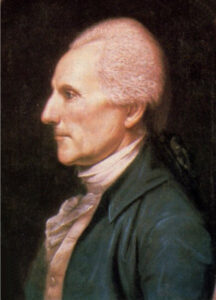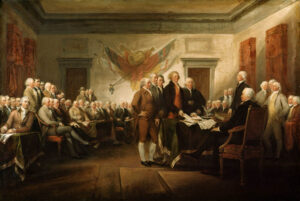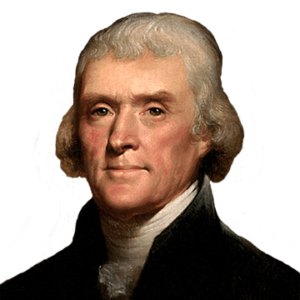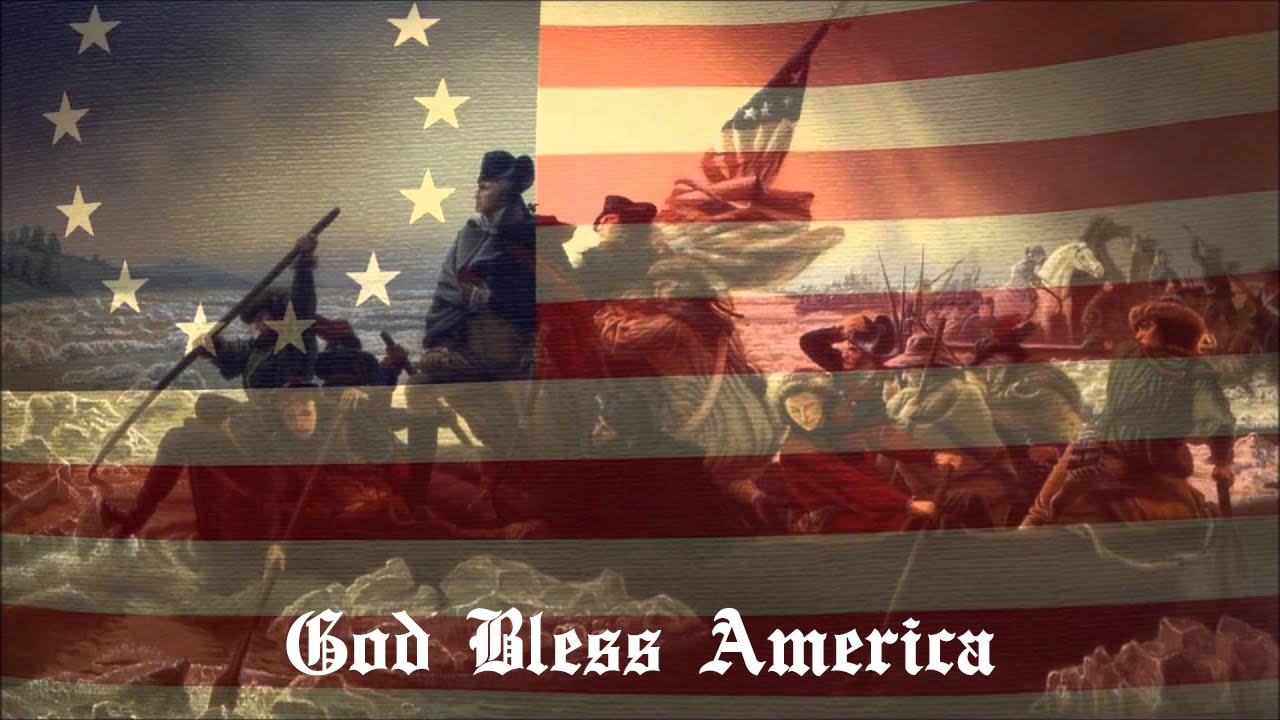 On July 2, 1776, The Lee Resolution (also known as "The Resolution for Independence") was passed by the Second Continental Congress. It formally declared our independence from Great Britain, King George III and his tyrannical reign over the colonies. Our Declaration of Independence basically established our new country, which came to be known as the United States of America.
On July 2, 1776, The Lee Resolution (also known as "The Resolution for Independence") was passed by the Second Continental Congress. It formally declared our independence from Great Britain, King George III and his tyrannical reign over the colonies. Our Declaration of Independence basically established our new country, which came to be known as the United States of America.
Richard Henry Lee, a delegate from Virginia, submitted the resolution on June 7, however, some delegates were committed to follow earlier instructions regarding reconciliation with Britain. Due to this, on June 11, the Lee Resolution was postponed by a vote of seven colonies to five, with New York abstaining.
They did, however, form the "Committee of Five" to prepare an actual declaration of independence in case it should pass when voted upon. John Adams, Benjamin Franklin, Thomas Jefferson, Robert R. Livingston and Roger Sherman were appointed to that committee. Congress then recessed for three weeks.
The task of writing the declaration fell to Jefferson who drew upon his own proposal for the Virginia Constitution, fellow Congressional delegate George Mason's Virginia Declaration of Rights, among other sources, as well as consulting the opinions of the other committee members.
 Upon the completion of writing the declaration, and the end of the recess, it was brought to the floor of Congress. On July 1, the delegates began to discuss and debate its content, eliminating approximately twenty-five percent of the original text. The next day the Lee Resolution declaring the establishment of a new country was brought back to the floor and was adopted by 12 of the 13 colonies, with New York not voting.
Upon the completion of writing the declaration, and the end of the recess, it was brought to the floor of Congress. On July 1, the delegates began to discuss and debate its content, eliminating approximately twenty-five percent of the original text. The next day the Lee Resolution declaring the establishment of a new country was brought back to the floor and was adopted by 12 of the 13 colonies, with New York not voting.
On July 4, 1776, Congress approved what was called the Declaration of Independence and then directed the Committee of Five to oversee the printing of the adopted document. The next day copies were distributed to key places and people throughout the Colonies where the text was followed by the words: "Signed by Order and in Behalf of the Congress, John Hancock, President. Attest. Charles Thomson, Secretary."
On July 9 New York officially approved it, making it unanimous. Then on July 19 Congress ordered that the Declaration of Independence be "fairly engrossed on parchment, with the title and stile [sic] of 'The unanimous declaration of the thirteen United States of America,' and that the same, when engrossed, be signed by every member of Congress."
Signing was to occur on August 2, 1776, but all were not present on that date. And two New York delegates did not sign; John Dickinson, who still wanted reconciliation, and Livingston, who felt it premature.
 Eventually, 56 delegates did sign the declaration, representing Connecticut (4), Delaware (3), Georgia (3), Maryland (4), Massachusetts Bay (5), New Hampshire (3), New Jersey (5), New York (4), North Carolina (3), Pennsylvania (9), Rhode Island (2), South Carolina (4) and Virginia (7).
Eventually, 56 delegates did sign the declaration, representing Connecticut (4), Delaware (3), Georgia (3), Maryland (4), Massachusetts Bay (5), New Hampshire (3), New Jersey (5), New York (4), North Carolina (3), Pennsylvania (9), Rhode Island (2), South Carolina (4) and Virginia (7).
It begins: The unanimous Declaration of the thirteen united States of America, When in the Course of human events it becomes necessary for one people to dissolve the political bands which have connected them with another and to assume among the powers of the earth, the separate and equal station to which the Laws of Nature and of Nature's God entitle them, a decent respect to the opinions of mankind requires that they should declare the causes which impel them to the separation.
It goes into great detail justifying the independence by the then-Colonies listing a total of 27 of the most noted grievances against King George III. The Declaration also asserts certain unalienable, natural and other legal rights, which also includes the right of revolution.
Their resolve was cast in stone, as it ends with this sentence: And for the support of this Declaration, with a firm reliance on the protection of Divine Providence, we mutually pledge to each other our Lives, our Fortunes, and our sacred Honor.
In the end: nine signers died of wounds during the Revolutionary War; five were captured or imprisoned; wives, and children were killed, jailed, mistreated, or left penniless; twelve signers' homes were burned to the ground; and, seventeen lost everything they owned.
 Their honor remained intact - not one signer defected, they fought to the end. To victory. To a new independent and free nation.
Their honor remained intact - not one signer defected, they fought to the end. To victory. To a new independent and free nation.
As the person who had written the bulk of the words, Jefferson became known as "the Principal Author of the Declaration of Independence." The original draft written by Jefferson is carefully preserved at our United States Library of Congress. It is his complete original, which includes revisions that were made by Adams and Franklin, along with the author's own notes of the changes that were made by Congress during debate.
The version that is most identified and regularly referred to as the original of the Declaration is the signed copy on permanent display at our National Archives, in Washington, D.C.
The Declaration of Independence is, indeed, one of the most treasured documents ever written.
Happy Independence Day, America, from your friends at IC Liberty Films, marketing and distribution company for the award-winning In Search of Liberty Constitution movie.

by Scott D. Welch, Patriot
Direct descendant of 8 Americans who fought in the Revolutionary War
Cousin of Patrick Henry

